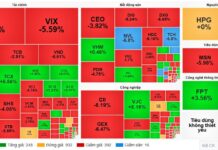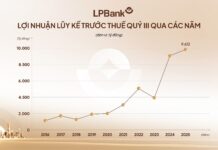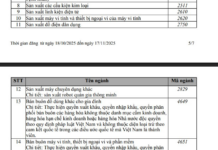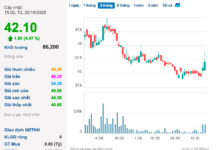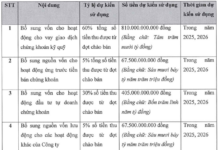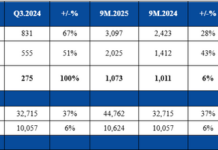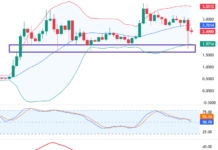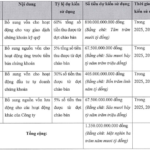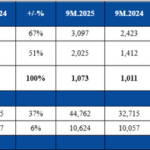The Industrial Production Index (IPI) for August 2024 is estimated to have increased by 2.0% month-on-month and 9.5% year-on-year. Specifically, compared to the previous year, the manufacturing industry grew by 10.6%, electricity production and distribution rose by 8.9%, and water supply, waste management, and wastewater treatment activities increased by 12.6%. However, the mining sector witnessed a decline of 1.5% during this period.
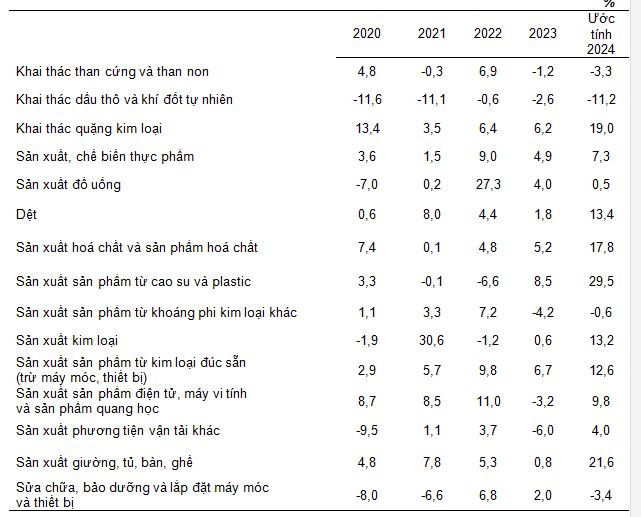
Growth/Decline Rates of the IPI from January to August in 2020-2024 Compared to the Same Period in the Previous Year for Key Industrial Sectors
|
For the first eight months of 2024, the IPI is estimated to have expanded by 8.6% year-on-year (compared to a 0.2% decline in the same period of 2023). During this period, the manufacturing industry grew by 9.7% (compared to a 0.4% decline in 2023), contributing 8.4 percentage points to the overall growth. Electricity production and distribution increased by 11.6%, adding 1.0 percentage point, while water supply, waste management, and wastewater treatment activities rose by 7.8%, contributing 0.1 percentage points. In contrast, the mining sector contracted by 6.0%, leading to a decrease of 0.9 percentage points.
Several key secondary industries witnessed significant growth in their production indices during the first eight months of 2024 compared to the same period last year: Rubber and plastic products manufacturing increased by 29.5%, furniture manufacturing rose by 21.6%, metal ore mining expanded by 19%, chemical and chemical products manufacturing grew by 17.8%, textile production increased by 13.4%, metal production rose by 13.2%, and manufacturing of fabricated metal products (excluding machinery and equipment) increased by 12.6%. Additionally, electronic product, computer, and optical product manufacturing rose by 9.8%, while food product manufacturing and processing increased by 7.3%.
On the other hand, some industries experienced lower growth or declines in their IPI during this period: Other transport equipment manufacturing increased by 4%, beverage production rose by only 0.5%, crude oil and natural gas extraction contracted by 11.2%, repair, maintenance, and installation of machinery and equipment decreased by 3.4%, coal mining declined by 3.3%, and manufacturing of other non-metallic mineral products fell by 0.6%.
During the first eight months of 2024, the IPI increased in 61 localities and decreased in two localities nationwide. The significant increases in some localities were attributed to robust growth in the manufacturing and electricity production and distribution sectors. Conversely, declines in the IPI in some localities were due to decreases in the manufacturing, mining, and electricity production and distribution sectors.
Several key industrial products witnessed notable growth during the first eight months of 2024 compared to the same period last year: Steel bars and angles increased by 31%, rolled steel rose by 17.1%, natural fiber textiles expanded by 15.6%, refined sugar grew by 14.2%, gasoline and other oils increased by 12.6%, NPK compound fertilizers rose by 12.3%, powdered milk expanded by 11.2%, electricity generation increased by 10.9%, and processed seafood products grew by 10.7%. Conversely, some products witnessed declines during this period: Liquefied petroleum gas (LPG) decreased by 15.3%, natural gas in gaseous form fell by 14.9%, crude oil extraction declined by 7.1%, mobile phones decreased by 5.2%, beer production fell by 3.7%, clean coal decreased by 3.4%, and alumina contracted by 2.7%.
The number of employees in industrial enterprises as of August 1, 2024, increased by 0.9% compared to the previous month and by 4.5% compared to the same period last year. Specifically, the number of employees in state-owned enterprises rose by 0.1% and 1.5%, in non-state-owned enterprises by 0.6% and 1.8%, and in foreign-invested enterprises by 1.1% and 5.7%. By industry, the number of employees in the mining sector remained unchanged from the previous month and increased by 0.1% from the same period last year. In the manufacturing sector, the number of employees grew by 1.0% and 4.8%, while in the electricity, gas, steam, hot water, and air conditioning production and distribution sector, it remained unchanged from the previous month and increased by 1.6% from the same period last year. In the water supply, waste management, and wastewater treatment sector, the number of employees rose by 0.1% and 0.8%.
Industrial Production Surges: A Robust 8.5% Year-on-Year Growth in the First Seven Months
The manufacturing industry is thriving, according to a report by the General Statistics Office. The industrial production index for July is estimated to have increased by 0.7% from the previous month and a significant 11.2% from the same period last year. This positive trend continues, with the seven-month period from January to July 2024 showing an estimated 8.5% growth in the industrial production index compared to the previous year.
The Rainy Season’s Conundrum: Northern Vietnam Faces a Dual Challenge of Abundant Rainfall and Looming Power Shortages
The energy reserves are typically low towards the end of the dry season, which puts the Northern region at risk of peak power shortages during certain periods.
Unlocking the Secrets to Success: How Ninh Binh’s Commerce and Services Are Thriving Through Tourism
The tourism industry in Ninh Binh has witnessed a remarkable transformation. By enhancing service quality, diversifying tourism products, and innovating new travel routes, the region has experienced a significant surge in visitor numbers. This influx of tourists has had a positive impact on the revenue of accommodation, food, and beverage, and travel service providers, ushering in a new era of prosperity for the local economy.
Unveiling the Runner-up in Economic Growth for H1 2024
The Khanh Hoa Provincial People’s Committee held its regular monthly meeting for May in June, where members offered detailed appraisals of the province’s governance since the beginning of the year and outlined developmental orientations for the remaining six months.

